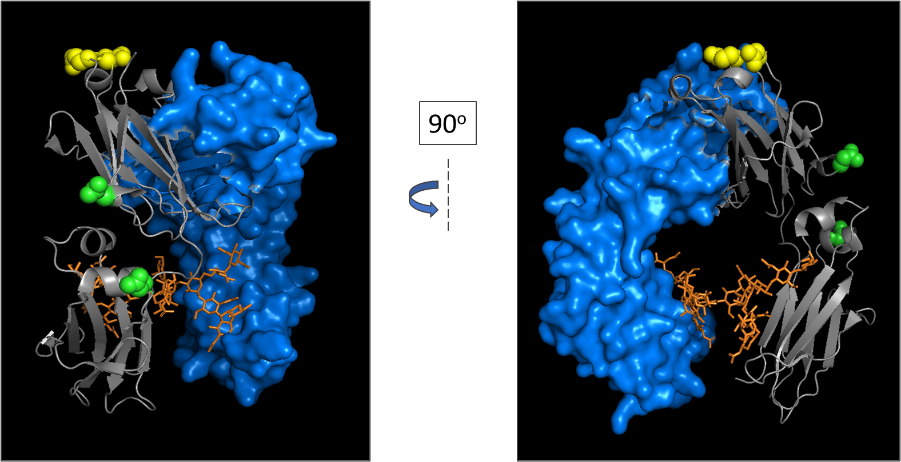New Infrared Correlation Methods for Assessing Therapeutic Protein Quality

Given the complexity of proteins, the broad nature of infrared bands, and the overlap of the HOH bending mode of water within the 1700–1600 cm−1 spectral region, the use of infrared spectroscopy to describe a protein's dynamic behavior in an aqueous solution is often considered too difficult. Curtis Meuse (IBBR, NIST) and his collaborator Belinda Pastrana (Protein Dynamic Solutions, Inc) address this challenge in a recent article in the Encyclopedia of Analytical Chemistry. The article* describes the application of new two-dimensional infrared correlation spectroscopy (2D-COS) and co-distribution spectroscopy (2D-CDS) methods to protein therapeutic quality assessment.
Protein deamidation, like oxidation and glycosylation, can initiate protein degradation pathways, leading to decreased target binding, decreased stability, and possibly aggregation. These concerns have become part of the critical quality attributes (CQAs) evaluated during therapeutic protein development because they can potentially impact drug safety and efficacy. To date, tandem liquid chromatography-mass spectrometry (LC-MS) techniques have been the primary method used to ascertain the presence and sites of deamidation in protein samples. However, the LC-MS process requires multiple steps, including enzymatic digestion and peptide mapping.
In their new method, 2D-COS and 2D-CDS are used to characterize protein samples perturbed by a temperature change. These techniques improve spectral, temporal, and spatial resolution by spreading the IR peaks into a second spectral dimension. In addition, 2D-CDS allows the assessment of changes in stability in the distributions of the protein sub-populations. Notably, the methods can monitor the sites and extents of asparagine and glutamine deamidation during thermal stress. The work successfully compares the new infrared method to established LC-MS methods for measuring the deamidation of the NISTmAb.
2D-COS and 2D-CDS analyses provides an alternative to the standard LC-MS that allows the evaluation of the stability of the protein sub-populations within a sample without any sample preparation steps. As a new tool for observing protein chemical and physical stability, the methods could find application in different stages of the development, release and lifecycle management of protein drugs.
*Belinda Pastrana and Curtis W. Meuse "Two-dimensional Correlation and Two-dimensional Co-distribution Spectroscopies of Proteins" Encyclopedia of Analytical Chemistry, John Wiley and Sons, September 29, 2022. https://onlinelibrary.wiley.com/doi/book/10.1002/9780470027318
